University
of Leeds - 1960s/1970s Campus
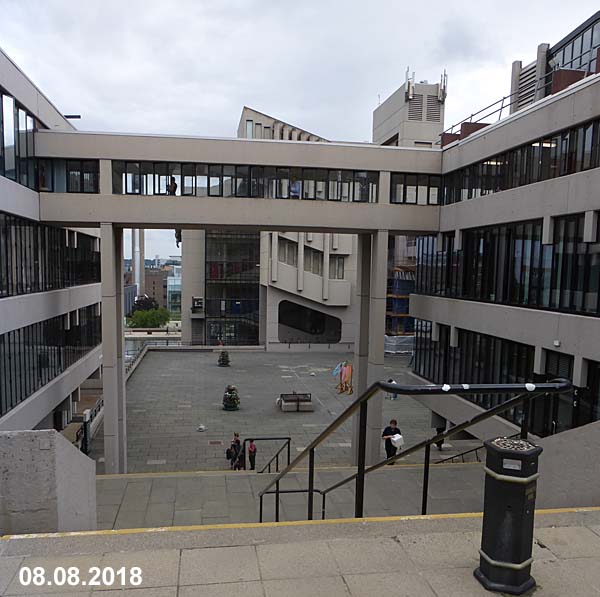
Architect
|
Chamberlain, Powell
& Bonn
|
Location
|
1964 - 1976
|
Description
|
If you look at this cluster of
buildings, on the southern end of the Leeds
University Campus, you might be tempted to
think that the brutalist concrete buildings
configured in long spine-like ranges around
courtyards, ....
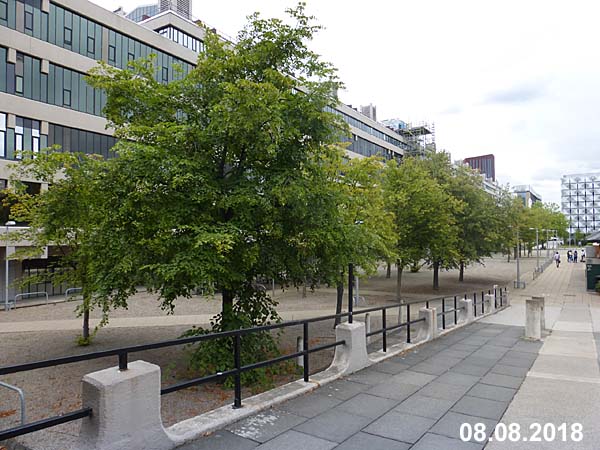
..... linked by high-level
bridges .....
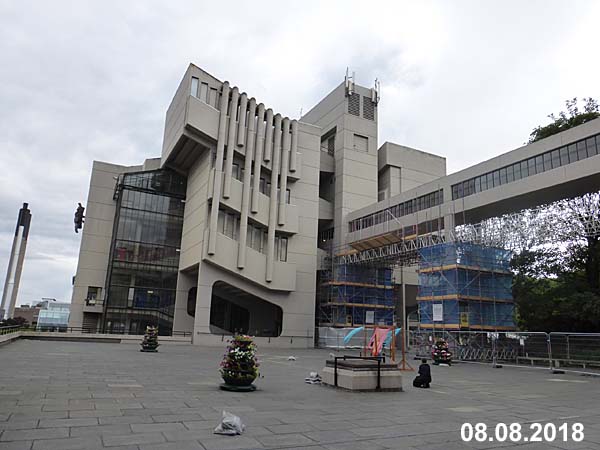
..... and with a water feature, is reminiscent
of London's Barbican, then you would be
right.
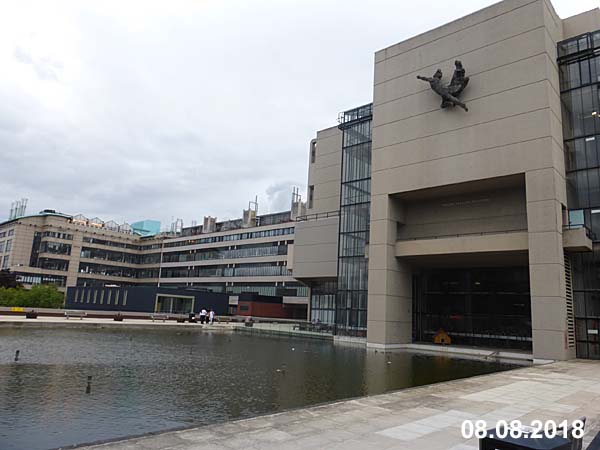
This part of the university's campus was built
in the 1960s and 70s to designs by the
architectural practice of Chamberlain, Powell
and Bonn that was responsible for The
Barbican.
The buildings are Grade II listed because they
are regarded as, "... excellent
examples of post-war architectural design
as influenced by Le Corbusier, both in
their structural design using reinforced
concrete and in their clean and sweeping
lines used on a grand scale; they form a
distinctive group, linked stylistically as
well as physically, with repeated
structural patterns of concrete beams and
continuous glazing." They
were also, "... highly influential as a
model for other university campuses, in
their genesis in an overall masterplan
based on research into student movements
and the use of different facilities."
The Twentieth Century Society points out that
the Roger Stevens lecture hall (see below)
was, "... a precursor for the Barbican
Theatre and features a distinctive, ribbed
surface treatment, (it) has
been listed at II*. This high grade is
rare for post-war buildings.
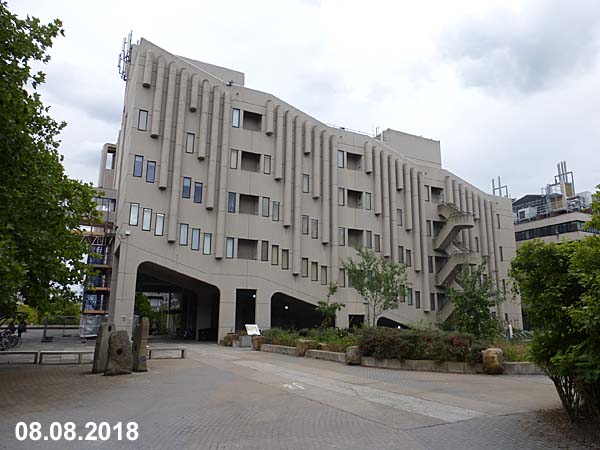
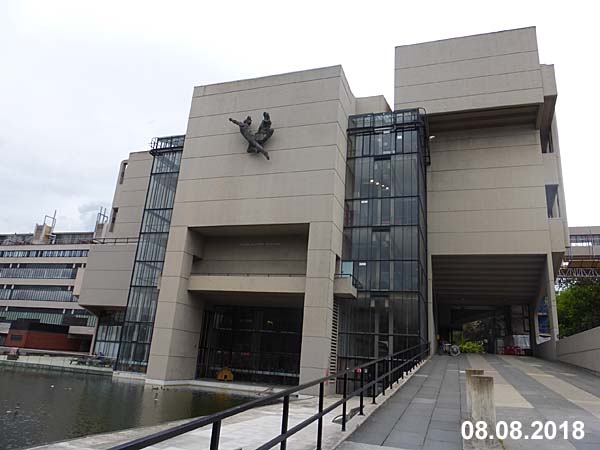
The sculpture on the building is by
William Chattaway. It was commissioned
originally by The Midland Bank and was
intended to be installed in its London Office
in the 1950s. The sculptor entitled it Hermes
but the patrons wanted to call it The Spirit
of Enterprise. Apparently, when the
London building was sold in 1983 the sculpture
was to be sold for scrap but Chattaway's
long-time patron Stanley Burton stepped in and
gave the university the money to purchase
it. The 4.5 ton sculpture was mounted on
the building and renamed Hermes.

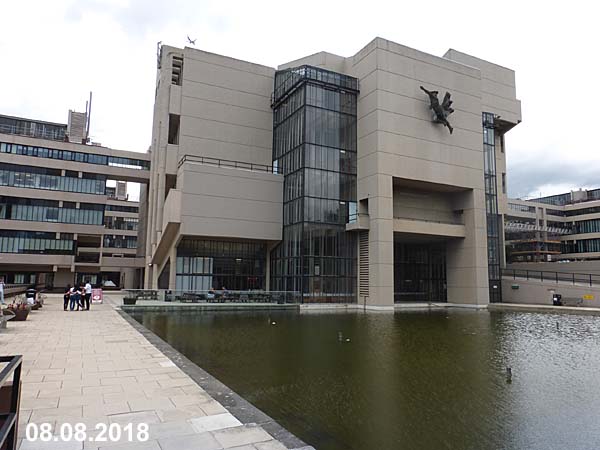

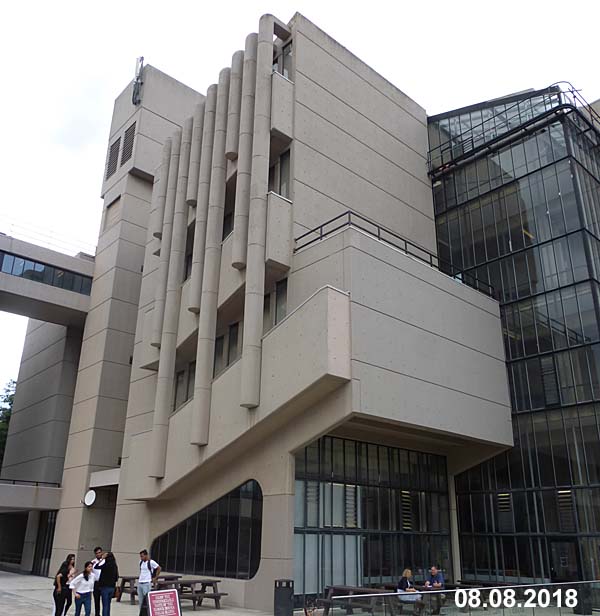
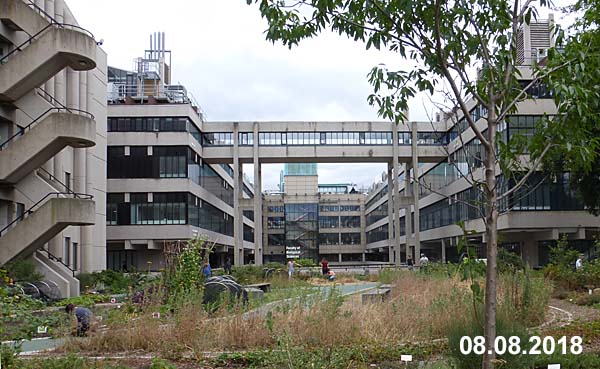
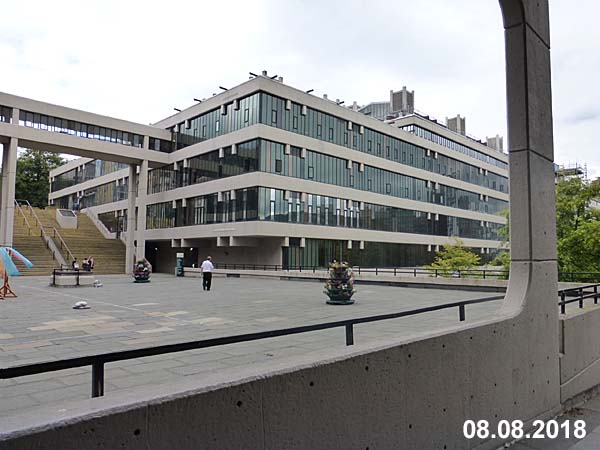

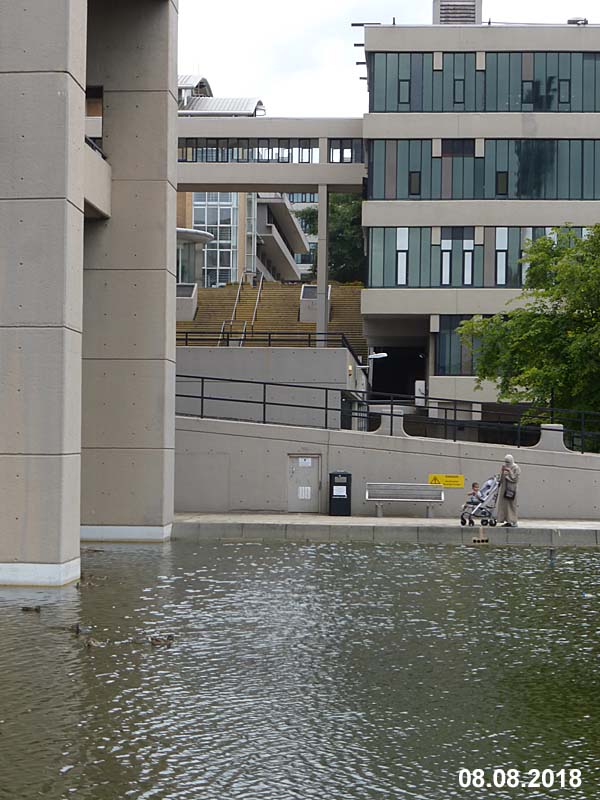
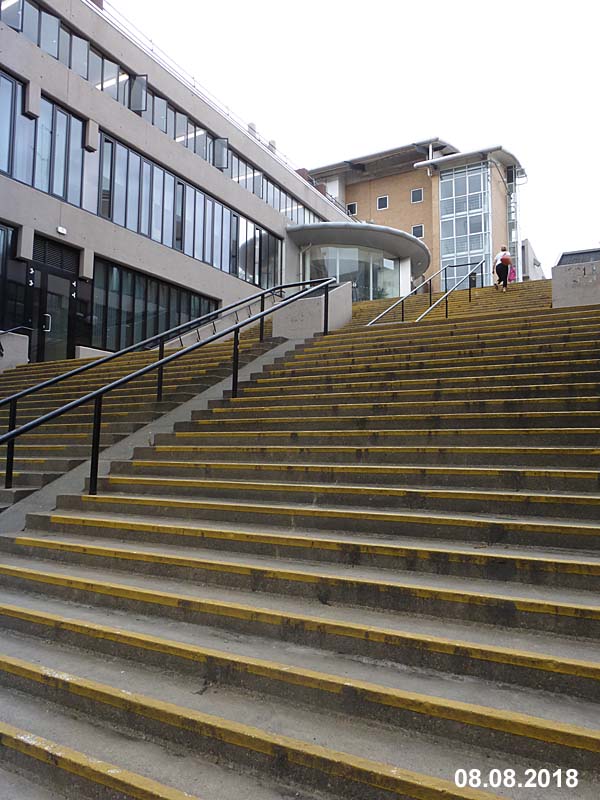
|
Close
Window

|



